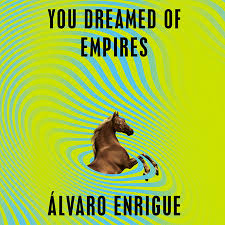by Leanne Ogasawara
SURREALISM, n. Psychic automatism in its pure state, by which one proposes to express — verbally, by means of the written word, or in any other manner — the actual functioning of thought. Dictated by the thought, in the absence of any control exercised by reason, exempt from any aesthetic or moral concern. —André Breton
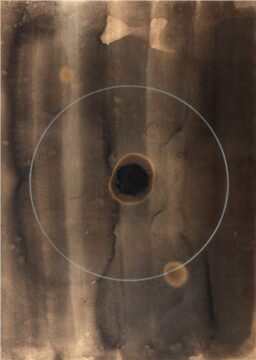
It’s 1923. And a student grabs a book off a shelf. Running for his life, book held tight, he is just one step ahead of a massive earthquake that would shake the world for four long minutes. Out of the building, he joins the surging crowds on the streets of Tokyo. People are in deep shock, but the young man is calm, reading as he walks among them. The book he grabbed was a novel by William Morris called News from Nowhere. It’s a work of socialist utopianism.
According to Shuzo Takiguchi, who is considered to be one of Japan’s great surrealistic poets, this experience was the start of his life as a poet. Disaster as the start of things. But despite what he claimed, we know that he’d already turned away from medicine, which his parents so desperately hoped he would study, instead spending more and more time in the university library reading literature.
And so, the Great Kanto Earthquake was not so much the inciting incident, as the event that let him off the hook.
As soon as the trains were running again, he returned to his family home in the countryside, where he tried to become a teacher. When this didn’t work, he was persuaded to return to university in 1925, and that was when he met the poet and classics scholar Junzaburō Nishiwaki, who was well-known at university for having studied at Oxford. Together with a group of other poets, they founded a literary journal devoted to French surrealism, which by that time had become Japan’s most popular avant-garde movement.
In the introduction to their exciting new translation of Takiguchi’s work, A Kiss for the Absolute (published by Princeton University Press 2024), translators Mary Jo Bang and Yuki Tanaka (both serious poets in their own rights) quote Takiguchi, who wrote of selling all his literature books after the earthquake but then returning to university where surrealistic thinking “punched through the void.”
 Surrealism became popular among artists and poets in early 20th century Japan, where it arguably had greater long-term impact than in France.
Surrealism became popular among artists and poets in early 20th century Japan, where it arguably had greater long-term impact than in France.
In the U.S. at least, surrealism is a movement we no longer talk about —Why is that?
So forgotten from literary discussions in English, one wonders how is it different from related movements, such as magical realism, fabulist, or speculative fiction and poetry.
In Japanese, the French term is translated as chōgenjitsushugi 超現実主義.
Anyone who has spent much time in Japan will recognize the much-overused word chō 超 which means “very” or “super.” For example: chōbijin is a very beautiful woman
While chō-sugoi is “super amazing.” Because the term is used like slang nowadays, it is easy to forget that it is actually an old expression, one that could include, in addition to “super” or “ultra,” connotations of “exciting,” “surprising,” “strange,” and even “grotesque.”
As Miryam Sas writes in her 1999 book Fault Lines: Cultural Memory and Japanese Surrealism, chō is a kind of transgression because it goes beyond “very” or “super” to suggest that normal categories in language have broken down. So chōbijin, then, is a woman so beautiful that the word beautiful is no longer sufficient. It is a transgression of the concept— or a breakdown in language itself. One that keeps our ordinary concept of beautiful in mind, when characterizing chō as being “beyond” beautiful or “sur” real beautiful.
At Sas explains, distant and unrelated juxtapositions are at the very heart of surrealism—both in France and in Japan. If magical realism and speculative include a category of still unrealized technologies or magical elements like ghosts in an otherwise very realistic world, surrealism does the opposite by immersing one with juxtaposed images so distant from real life, as to be jarring; for as Andre Breton remarked in defining the movement: “Surrealism is based on the belief in the superior reality of certain forms of previously neglected associations.” This is something that Surrealistic poet Junzaburō Nishiwaki took a step further when he suggested that the more distant the realities are from each other, the more truth is achieved.
That is an interesting thing to consider, so I will say it again: the more distant the realities are from each other, the more truth is achieved.
In fiction workshops, writers sometimes talk of emotional truth that, even if it differs from what “really” happened in an author’s lived experience, this emotional truth transcends the reality. And in this way, the surrealistic work aims to achieve this kind of emotional truth by evoking a dream-like stream of consciousness reality where normally discrete and unrelated images are willfully place side-by-side, to become a shock to consciousness. We see this in all of Takiguchi’s work. For example:
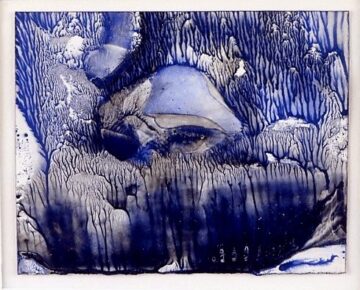
Max Ernst
Night tourists
devours
night’s cryptic handcuffs
as if they were bits of t-bone
At voiceless midnight
mimed letters arrive
C/O The Gobi desert.
Famished immortal birds
Mistake a tin can of words
for a tiny morsel of meat
by starved, eternal birds.
One night
a human gift
was flaming like a flower.
Because the images are so crucial, I much prefer the translators’ earlier attempt published in Asymptote (see below), where the same translators rendered the Japanese slightly differently, including preserving the double use of “scraps of meat” nikuhen.
Why translate the same word one way one time and another way later? Surely the poet had the repetition there for a reason. Especially in surrealistic poetry, the images are crucially placed: the images themselves do the heavy lifting in the poem, rather than narrative or rhyme.
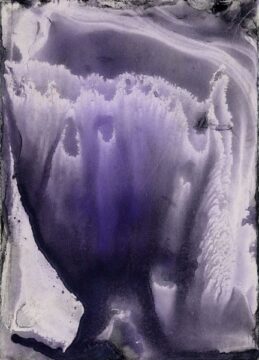
A night traveler
devours
night’s cryptic handcuffs
like a piece of meat.
At voiceless midnight
a letter of mimicry arrives
in care of the Gobi desert.
A can of words
is mistaken for a piece of meat
by starved, eternal birds.
One night
a human gift
was burning like a flower.
Written during a period of repression in Japan, when there were curfews and authorities policed the words of poets, a “can of words” and “handcuffs at night” can indeed feel shocking when placed together with a human gift “burning like a flower.” Hana de moeteita —in Japanese, flowers like sakura can be said to “burn” when a tree is in full bloom it can appear like a tree is aflame. But what does any of this have to do with Max Earnst? This poem is part of a seven-part cycle with each poem given a title of a Surrealistic artist, like Picasso and Dali.
The poems grew out of what was a dialogue between French and Japanese poets. The translation of the movement into Japanese culture and language was in fact a dialogue with Takiguchi meeting and having many conversations with Breton, starting in 1958, when the two first met in Paris. In exploring the use of symbolism in surrealistic poetry, Sas discusses how much the work of Sigmund Freud informed the movement—and this was something Takiguchi and Breton both explored in their work as well as their conversations with each other and something I am intensely interested in.
Typically, surrealist literature is set in a dream-like world that seems to combine elements of the conscious and the unconscious. This, as we know, was Freud’s main obsession; for it was Freud who realized the way that, in some people, trauma is actually bypassed in the mind. Not experienced directly, instead the experience is “registered” in the psyche as a kind of memory of the event that patients or survivors return to again and again, neurotically trying to process what happened to them. Sas calls this a memory trace, but I like to think of it as a groove that develops in one’s brain, whereby the trauma makes a kind of imprint. But this then becomes a kind of interruption since the patient returns to it unconsciously again and again.
How else to understand the way a victim will sometimes go on to inflict onto their children what was done to them? It is unconscious. For trauma is an interruption of life, like a broken thread. And the neurotic repetition is often not conscious in the victim.
To uncover the meaning of this is one of the aims of surrealism (and psychoanalysis). And it is the reason why surrealistic paintings and poems have that powerful fever dream-like quality. They are hallucinogenic in the way they seek to evoke our dream lives. Some of the most interesting translated novels of 2024 had this quality; like the surrealistic masterpiece Takaoka’s Travels, by Tatsuhiko Shibusawa, fantastically translated by David Boyd. Or my own favorite of the year, Álvaro Enrigue’s You Dreamed of Empires, which is about the 1519 meeting of the Spanish conquistador Hernán Cortés with the Aztec emperor Moctezuma but written as in a captivating dreamscape. In a note to the award-winning translator of the novel Samantha Wimmer, Enrigue encourages her to not get hung up on the meaning of the words related to pre-Columbian culture, since he wants her to be plunged into the world of the dream.
To return back to Breton’s famous assertion that the real world was something hidden to us in our normal lives, we can easily understand the appeal to dreams and to the kinds of truths that can be uncovered in the gaps between distant images. Like that fateful meeting between Cortez and Moctezuma. How else to get at the world-changing impact it had except through symbols and dreams?
And this is something that lies beneath or beyond language itself.
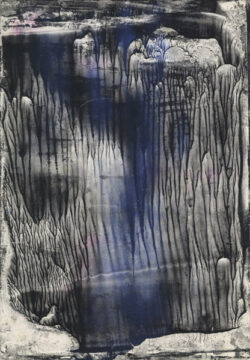
Sas discusses the way the word “influence” in Japanese means a shadow that is also a trace.
影響
影 is shadow
響 reverberation
Eikyō means “shadow following form,” or “echo responding to sound.”
Many times, we forget the influence is even there—so in that sense it can be seen as another unconscious force bearing down on us. Some of the best writing (and art) is in the business of both uncovering the unconscious forces in our lives, in the form of symbols and fantasies, but also in translating these into consciousness.
Mary Jo Bang and Yuki Tanaka, in their translators’ introduction to the new collection say as much when they state that “In the twelfth century translation referred to the moving of reliquary elements of a saint’s body from one place to another. Written language in the Middle Ages was primarily the domain of the clergy and much clerical writing was about the lives of saints. It makes sense that the word for carrying saint’s bones might in time be used for the act of carrying a work (about saints) written in one language over into another language. The transfer of language, however, is even more complicated than the delicate task of moving the remains of a body.”
While in the United States, realism and naturalism have reigned supreme in literature (yawn), in many parts of the world, such as Latin America or Japan, Fabulist and surrealistic traditions continue to make themselves strongly felt. Surrealism, born in France, flowered and took many new directions in Japan. From the popular literature of Haruki Murakami and films of Hayao Miyazaki to avant-garde performance traditions like Butoh, the focus on the unconscious and non-naturalistic continues to be admired.
Surrealism, being less tied to real life and what we call reality—in its transgressional nature—is global and so many of the images speak beyond this language or that. Translation of a mood, a weirdness, an unexpected juxtaposition of images, a state of things outside normal reality is not an act of transposition, rather an act of creation. Rather than an extension, it is an exit from what is known and expected in each distinct culture. Translation builds the runway where this strange flight must take off.
Pablo Picasso
The sad eyes
of flying birds
are hammered into our blood
like songs.
Pupils and lips in water speak
to ears and a forehead in the ground.
Love in the wind
raises a gentle voice
and opens the petals of windows.
A white chair bends its black leg
and stabs a breast
like a sword.
At moonrise
a woman drops her eyes to her bare skin.
A map smeared with blood
spreads its blue.
The wings of waterbirds
hide the ocean.
The color of milk slightly
hides the color of blood.
Recommended Reading
A Kiss for the Absolute: Selected Poems of Shuzo Takiguchi (The Lockert Library of Poetry in Translation)
by Shuzo Takiguchi, Mary Jo Bang & Yuki Tanaka
Fault Lines: Cultural Memory and Japanese Surrealism (Cultural Memory in the Present), by Miryam Sas
You Dreamed of Empires, by Álvaro Enrigue, Natasha Wimmer (Translator)
And my Dreaming in Japanese Substack!
